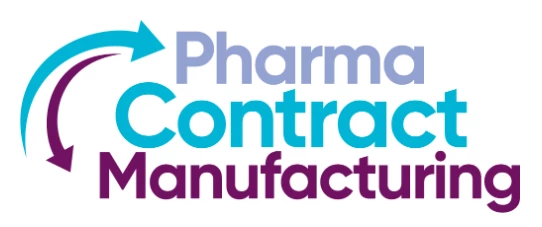Single-use, disposable bioprocessing reached the Billion-Dollar club this year, and judging by suppliers’ sales growth, it continues to gain broad industry acceptance. The many advantages offered to CMOs and biotherapeutic developers have been well documented. Faster production times, and reduced capital investments in facilities and equipment are just a few reasons. Disposable bioreactors have become rational options, as upstream productivity and equipment requirements can now be achieved at a tenth the scale.
Entirely disposable upstream processes that can support commercial-scale production are a reality, and companies are beginning to focus on putting the pieces together to create more cost-effective, single-use, and modular facilities. Today, even older, more conventionally built facilities are modifying their infrastructure to support disposables for production.
How it’s Done Today
Today, a slight majority of industry manufacturing strategists expect to retrofit existing facilities with disposables rather than designing entirely new facilities, according to our 2014 global industry study, 11th Annual Report and Survey of Biopharmaceutical Manufacturing Capacity and Production [1]. Biomanufacturers with existing facilities are looking first to retrofit such facilities cheaply and quickly - possibly using modular skid-based or disposables approaches - to maximize their investment in these valuable resources, including adapting facilities to handle more products and higher volumes. Compared with a 4+ year construction timeline for fixed stainless steel facilities, installation of single-use systems and single-use/stainless steel hybrid retrofits can provide additional flexibility and incremental capacity in months rather than years.
But while the paradigm may be to retrofit existing facilities, there’s also the possibility of entirely disposable facilities: in fact, almost half (46%) of respondents to our study expect to see a 100% disposable facility in operation by 2018.
Fig. 1: Single use/Disposable Device Adoption Factors
Source: 11th Annual Report and Survey of Biopharmaceutical Manufacturing, April 2014, www.bioplanassociates.com/11th
|
DATA FOR YOUR LAYOUT PEOPLE |
Strongly Agree |
Agree |
|
I expect to retrofit existing facilities with disposables, rather than designing entirely new facilities |
6.0% |
47.6% |
|
Vendors today do not provide sufficiently SCALABLE single use disposables and techniques |
18.8% |
34.1% |
|
I expect to see a 100% disposable facility in operation within 5 years |
18.4% |
27.6% |
Shire provides the closest example to a fully disposable bioprocessing facility. In 2010, the company completed its Lexington, MA biologics manufacturing facility; the facility’s whole upstream line uses single-use technologies. Industry consensus is that the facility has been a success, with the SUS design reportedly cutting total facility size by 38% and reducing capital costs by $50 million. [2]
As such, the Shire facility took advantage of many of the benefits industry respondents ascribe to disposable technologies. Chief among those is reduced capital investment in facility and equipment, rated the single most critical reason for increasing use of disposables by industry respondents to our study in each of its last 6 editions. For a company like Shire, which manufactures specialty drugs, the flexibility afforded by an SUS facility was also paramount.
Fig. 2: Single Most Critical Reason for Increasing Use of Disposables
|
FOR YOUR LAYOUT |
Year 2014 |
|
Reduce capital investment in facility & equipment |
19.3% |
|
Faster campaign turnaround time |
15.9% |
|
Eliminate cleaning requirements |
11.4% |
|
Reduce time to get facility up and running |
10.2% |
|
Decrease risk of PRODUCT cross-contamination |
8.0% |
Source: 11th Annual Report and Survey of Biopharmaceutical Manufacturing, April 2014, www.bioplanassociates.com/11th
That flexibility ought to be a driving force in the future adoption of fully single-use facilities. Indeed, the industry’s corollary move towards continuous manufacture lends itself to bioprocessing becoming more portable and facilities more clonable. The increasingly prevalence of single-use systems dovetails with the growing adoption of modular bioprocessing systems and multiple smaller continuous bioprocess lines in smaller facilities worldwide.
What’s Holding Back A Fully Disposable Facility?
While one can envision a fully disposable facility coming into existence (if not becoming the norm) in the years to come, there are several innovations that are required to make this eventuality come about sooner. Those include:
- Development of downstream single-use filtration and chromatography steps;
- Development of modular bioprocessing facilities;
- Plug-and-Play standardization of connections, hoses, and devices;
- Regulatory packages to deal with leachables and extractables concerns
Of these issues, the more systemic involve integrating modular facilities and standardizing the devices involved. This is not a trivial issue. According to Dr Barry Holtz, President at Holtz Biopharma Consulting, an industry group developing more efficient bioprocessing technologies, the big challenge for the future of single-use and modular facilities will involve integrating all the bioprocessing systems required for GMP production. Today, manufacturing systems are often not easily ‘connectible’ and frequently don’t communicate or integrate with the processes governed by Quality by Design.
Dr Holtz notes, “Continuous process monitoring and control is critical, and truly predictive tools still need to be developed to model facilities design, information management and automation. Processes can then be harmonized as early as possible into the environment required, the information can be monitored and managed, and automation can be established to really achieve real time process control.” Some small molecule facilities, for example, are already implementing remote process monitoring and control.
In addition to the significant challenges in integrating process control and devices, unit operation problems hindering fully single-use facilities include:.
· Downstream single-use filtration and chromatography steps: Single-use filters and chromatography are very much in demand, according to our latest annual survey. Our survey found that 46.5% of respondents were looking at single-use filters, putting them behind only the use of high capacity resins (52.1%) and membrane technology (49.3%). Indeed, disposable downstream technologies have the ability to improve downstream purification operations, as more than 4 in 10 respondents to our survey attested. While disposable technologies could alleviate many downstream issues, the alternatives haven’t been developed yet. Industry observers anecdotally suggest that if the per liter cost for Protein A were to decrease by a sizable order of magnitude (up to 10 times), then disposable columns could begin appearing in downstream operations.
· Plug-and-Play standardization of connections, hoses, and devices: Connector standardization is very important to the further development of single-use devices and the potential for a fully SUS facility. But it’s not just connector compatibility that’s needed: The vast majority of respondents to our survey also feel that it’s important for single-use/disposable vendors to work harder to standardize materials (89.8%), components (87.1%) and dimensions, configurations (64.3%), among others. This factor relates, again, to process and operational integration. In fact, when selecting a single-use vendor, just 28% are satisfied with their vendor in this regar
Next Steps Toward Fully Single-use Facilities
Fully SUS bioprocessing facilities will come online over time, as downstream equipment is developed, and as systems, connectivity, and process design are integrated into a more seamless flow. This is not likely to occur in the near future, but rather incrementally, as hybrid facilities (where fixed stainless steel devices are operated together with disposable single-use plastic devices) are developed, and as early-stage biologics in the development pipeline that are currently made in single use platforms emerge to commercial scale bioproduction. It’s likely that they will first be built by smaller manufacturers who require the flexibility and reductions in capital afforded.
There remain several hurdles, though. The industry must first work with regulators on a number of issues including leachables and extractables, and particulates. Devices will need to be standardized (an issue that may be resolved through standards setting organizations and trade associations offering support). And there remains a lack of cost-effective alternatives to existing downstream chromatography operations.
The current 15% growth in single-use devices indicates a broader current in the biopharmaceutical manufacturing industry towards flexibility and modularity. So both hybrid, and fully SUS facilities are in our future. The question is when.
References:
1. 11th Annual Report and Survey of Biopharmaceutical Manufacturing Capacity and Production, April 2014, Rockville, MD www.bioplanassociates.com/11th
2. Shire’s $210M Single-Use Gamble, December 3, 2013
http://www.lifescienceleader.com/doc/shires-m-single-use-gamble-0001
Survey Methodology: The 2014 Eleventh Annual Report and Survey of Biopharmaceutical Manufacturing Capacity and Production yields a composite view and trend analysis from 238 responsible individuals at biopharmaceutical manufacturers and contract manufacturing organizations (CMOs) in 31 countries. The methodology also included over 158 direct suppliers of materials, services and equipment to this industry. This year's study covers such issues as: new product needs, facility budget changes, current capacity, future capacity constraints, expansions, use of disposables, trends and budgets in disposables, trends in downstream purification, quality management and control, hiring issues, and employment. The quantitative trend analysis provides details and comparisons of production by biotherapeutic developers and CMOs. It also evaluates trends over time, and assesses differences in the world's major markets in the U.S. and Europe.





















